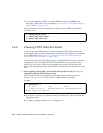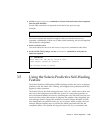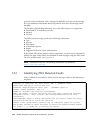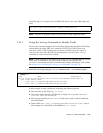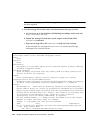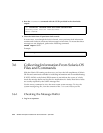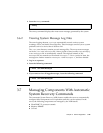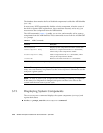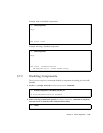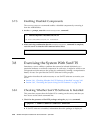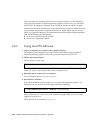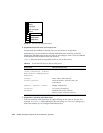
Chapter 3 Server Diagnostics 3-45
2. Issue the dmesg command:
The dmesg command displays the most recent messages generated by the system.
3.6.2 Viewing System Message Log Files
The error logging daemon, syslogd, automatically records various system
warnings, errors, and faults in message files. These messages can alert you to system
problems such as a device that is about to fail.
The /var/adm directory contains several message files. The most recent messages
are in the /var/adm/messages file. After a period of time (usually every ten days),
a new messages file is automatically created. The original contents of the
messages file are rotated to a file named messages.1. Over a period of time, the
messages are further rotated to messages.2 and messages.3, and then deleted.
1. Log in as superuser.
2. Issue the following command:
3. If you want to view all logged messages, issue the following command:
3.7 Managing Components With Automatic
System Recovery Commands
The Automatic System Recovery (ASR) feature enables the server to automatically
configure failed components out of operation until they can be replaced. In the
server, the following components are managed by the ASR feature:
■ UltraSPARC T1 processor strands
■ Memory DIMMS
■ I/O bus
# dmesg
# more /var/adm/messages
# more /var/adm/messages*




